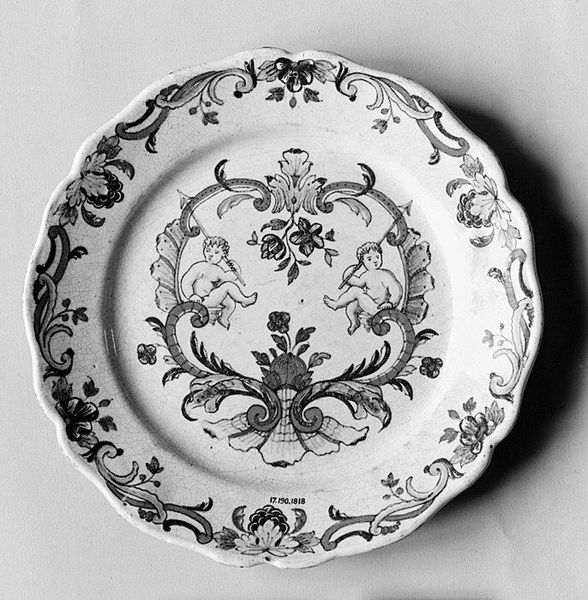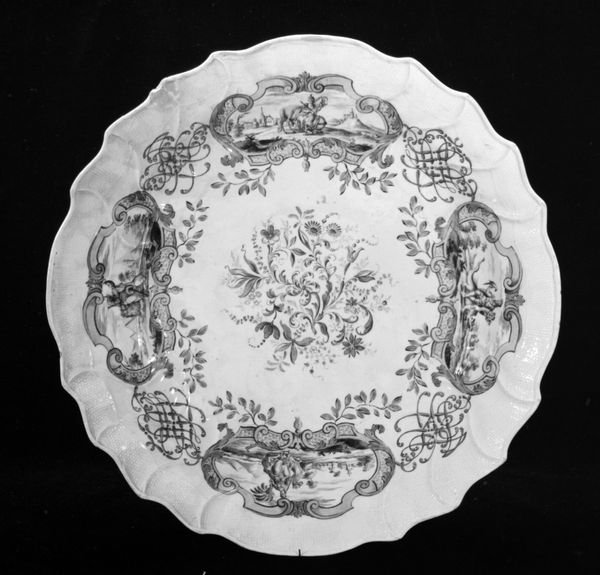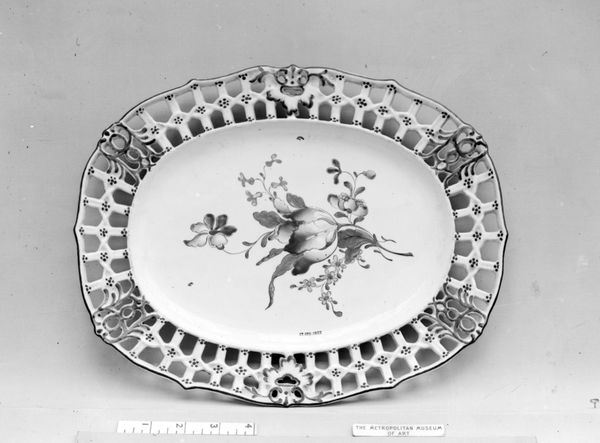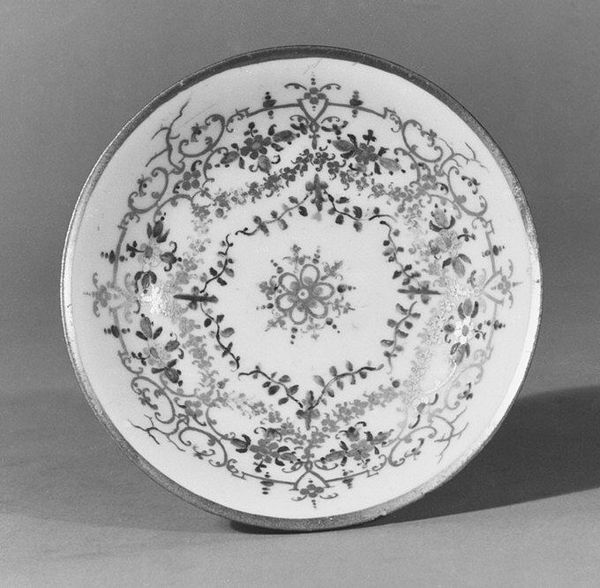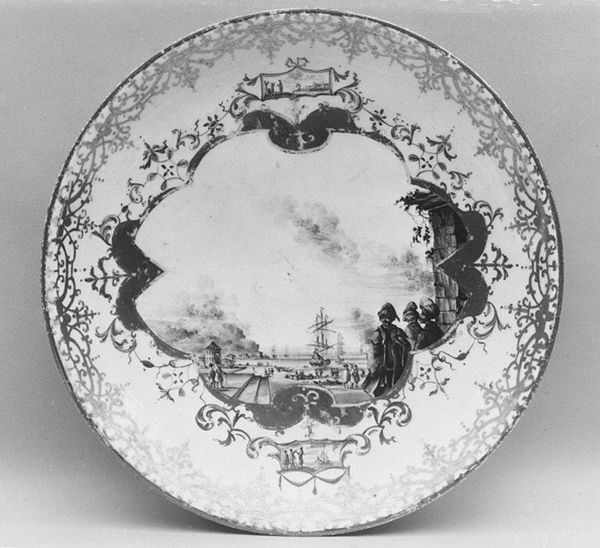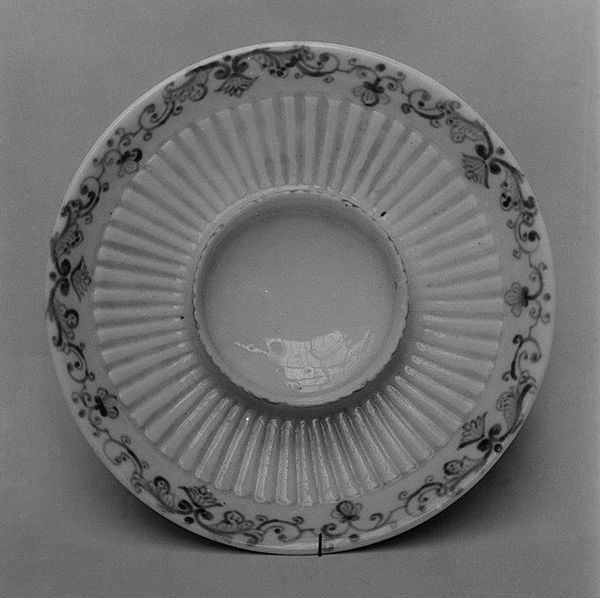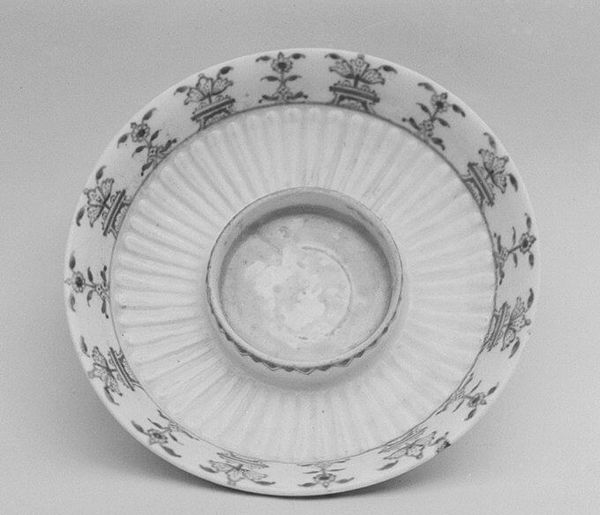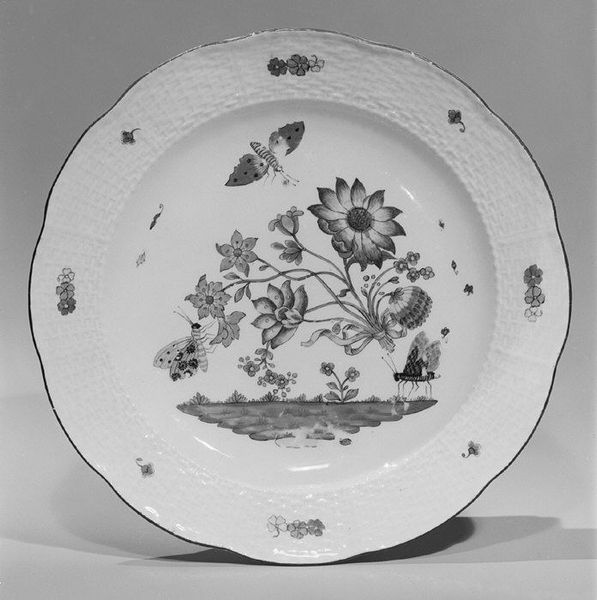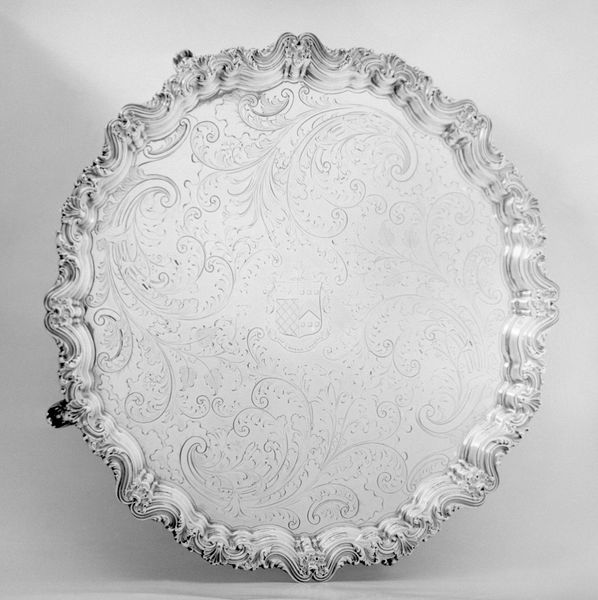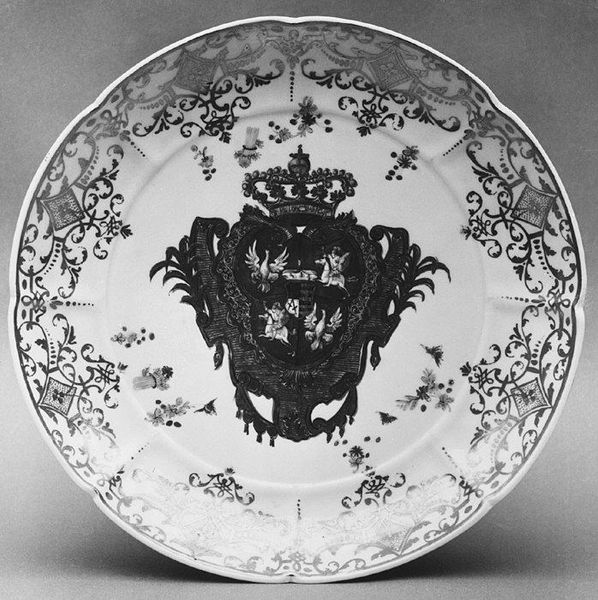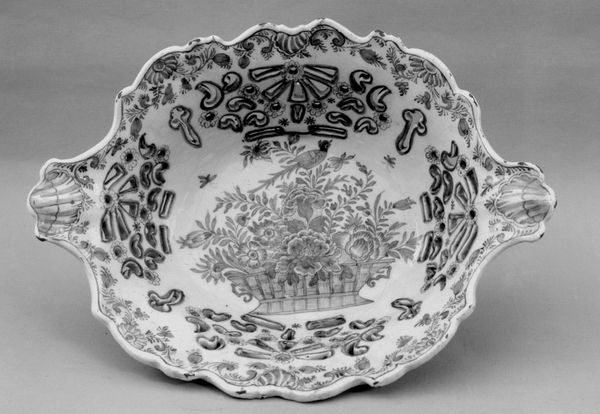
Eight saucers (part of a service) 1755 - 1765
0:00
0:00
ceramic, porcelain, sculpture
#
decorative element
#
ceramic
#
porcelain
#
sculpture
#
decorative-art
#
rococo
Dimensions: Each: Diam. 5 3/8 in. (13.7 cm.)
Copyright: Public Domain
Curator: Take a look at this porcelain saucer. The Doccia Porcelain Manufactory, known for its exquisite craftsmanship, created this as part of a larger service between 1755 and 1765. It's a striking example of the Rococo style, and it's currently held at the Metropolitan Museum of Art. Editor: My first impression is one of delicate luxury. The ornamentation is elaborate, yet somehow balanced. The sculpted reliefs of shells and flowers speak to a love of nature tamed and stylized, reflecting the fashions and aspirations of the aristocracy. Curator: Absolutely. The Doccia factory, under the patronage of Marchese Carlo Ginori, aimed to replicate and rival the famous Meissen porcelain. These services were more than just tableware; they were statements of status and taste. Consider the social rituals associated with dining during that period – it’s theatre, a public performance of wealth and refinement. Editor: Indeed! The shell motif recurs in the decorative arts, representing pilgrimage and the journey of life but beyond this obvious meaning, they represented at that time status, as people liked to adorn their houses and items with references to power. Curator: The use of porcelain is interesting, too. The translucence and the smooth, almost ethereal surface must have been marveling back then. It added another layer of richness, aligning these objects with trade routes, exploration, and even colonial expansion that funded noble houses. Editor: And the placement of the shells and floral arrangements certainly adds to the visual delight. Each shell almost serves as a mini stage and the clusters of flowers with this almost photorealistic representation have a rich and luscious allure for all the senses. This piece goes beyond mere function. Curator: Precisely! These porcelain objects offer insight into the political economy of 18th-century Europe, revealing connections between commerce, art, and social class. These elements give a clear understanding of society. Editor: Studying these decorative symbols and patterns brings us closer to how the period saw itself. They wanted something new that still evoked feelings and aspirations in other eras, blending into the stream of cultural consciousness. Curator: It reminds us of the power objects hold in mirroring and shaping society’s values. Editor: Agreed. Pieces such as this go beyond mere objects; they are vessels of collective aspirations, echoing through history.
Comments
No comments
Be the first to comment and join the conversation on the ultimate creative platform.

